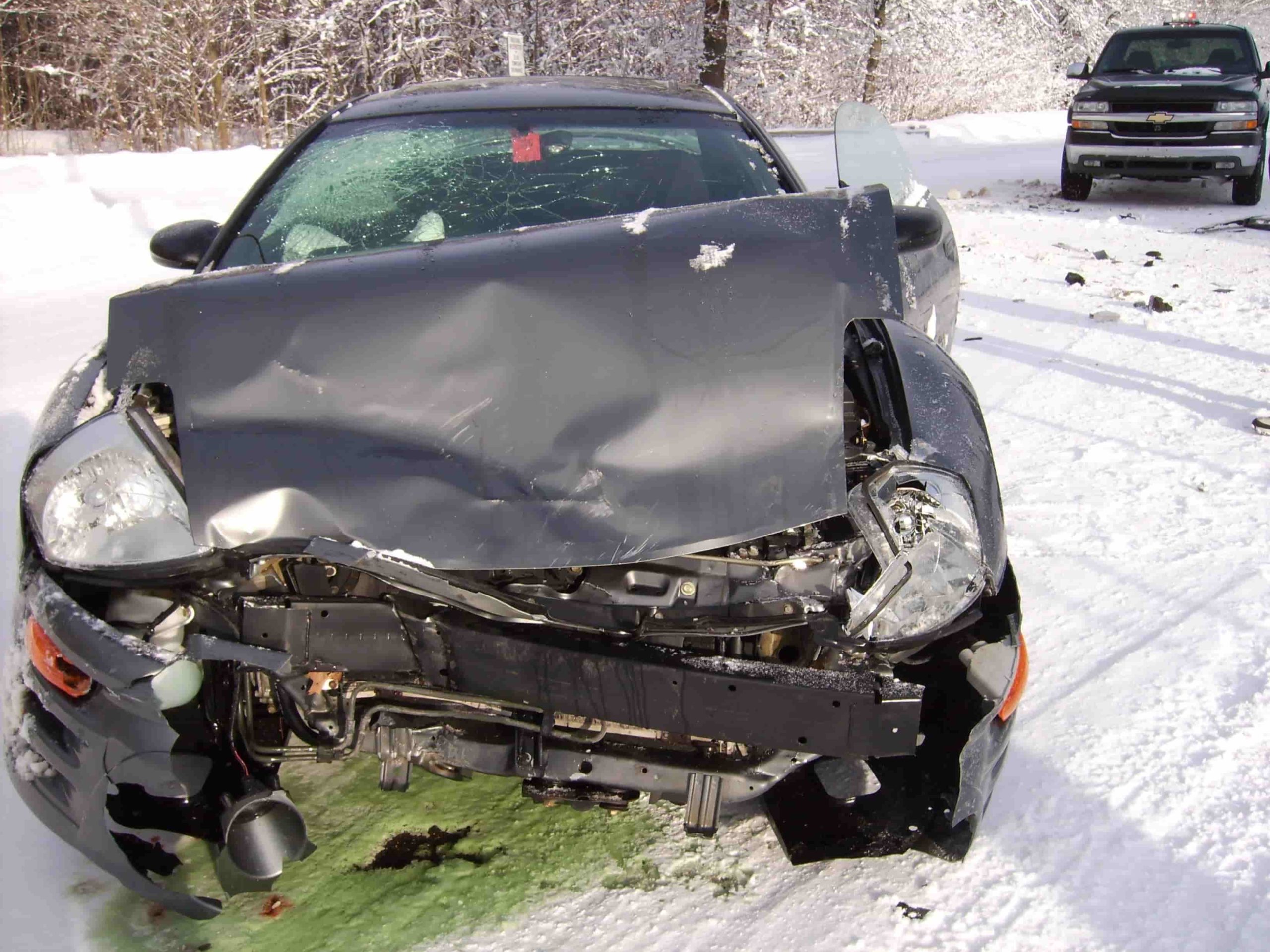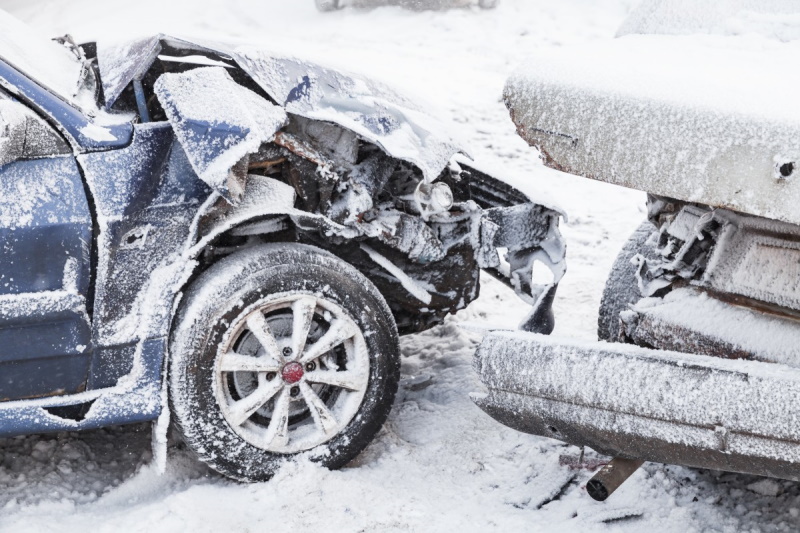You recognize that winter driving is often more dangerous due to slippery roadways, windy conditions, and more. The following 9 winter driving statistics back this up. If another driver’s negligence in wintery weather leaves you injured, an experienced Texas car wreck lawyer can help.
What’s In This Guide
What Are the Winter Car Accident Statistics?

According to the Federal Highway Administration, the following four important statistics apply to winter driving:
- One: 18 percent of all weather-related traffic accidents happen during snow or sleet.
- Two: 13 percent of all weather-related traffic accidents happen on icy pavement.
- Three: 16 percent of all weather-related traffic accidents happen on slushy pavement.
- Four: The vast majority of accidents related to weather happen either during rainfall (70 percent) or on wet pavement (46 percent).
The effect that weather has on traffic accidents is considerable. Weather-related accidents refer to those crashes that happen during adverse weather, such as rain, sleet, snow (and blowing snow), fog, or severe crosswinds. Icy, wet, slick, or slushy pavement also qualifies. Consider the following two injury-related statistics:
- Five: Each year, about 5,000 people are killed and more than 418,000 are injured in traffic accidents that are weather related.
- Six: There are, on average, 5,891,000 traffic accidents each year, and almost 1,235,000 – or 21% of them – are related to the weather.
Finally, consider the following three statistics culled from an exhaustive 10-year study from 2007 to 2016:
- Seven: There were 1,235,145 weather-related traffic accidents, which accounts for 21 percent of the total crashes.
- Eight: 418,005 people were injured in weather-related traffic accidents, which accounts for 19 percent of the total crash-related injuries.
- Nine: 5,376 people were killed in weather-related traffic accidents, which accounts for 16 percent of all crash-related fatalities.
[Related Article] Car Accident Statistics By Manufacturer: 5 Auto Brands With The Most Car Accidents (2021)
Safety Tips
The National Highway Traffic Safety Administration (NHTSA) shares some important safety tips to help you stay safe out there during the winter months. Whatever winter weather brings – whether ice, sleet, snow, or a wintry mix – it can lead to extremely dangerous driving conditions. In fact, in 2019 alone, 440 people lost their lives and another estimated 33,000 were injured in accidents that occurred during wintry weather. As such, NHTSA offers several important safety tips.
Keep It Simple
The primary safety tip when it comes to bad weather is one that can save your life, and it is to slow down. It is more difficult to safely control your vehicle on wet, icy, slick, and snow-packed surfaces. In 2019, there were 182,000 winter-related crashes that led to police reports, but slowing your speed according to the condition of the road can help to ensure that you don’t become one of those reports. The worse the weather, the slower your speed should be, and don’t forget to also increase the distance between you and any forward vehicle. Failure to do so can lead to multiple car pileups, which are the hallmark of blizzards and bad weather across the nation.
Watch Out for Snowplows
With wintry weather come snowplows, and it’s important to drive safely in response. To begin, never crowd a snowplow by traveling too closely behind it, and don’t travel beside a snowplow. These plows have important jobs to do, and in the process, they travel slowly, enter and exit roads frequently, make frequent stops, and tend to take up more than a full lane. If you come upon a snowplow, allow yourself plenty of room, and do not pass it unless there is plenty of room for doing so and unless you won’t need to linger beside the plow in the process.
What to Do in an Emergency
If wintry weather leaves you stopped or stalled on the road, keep all the following in mind:
- Focus on your car, your surroundings, and the safety of you and your passengers.
- Ensure that everyone in your vehicle stays with it.
- Don’t overexert yourself.
- Make sure your car can be seen by other drivers to the extent possible. This can include putting on your flashers, keeping your interior dome light on, putting out safety triangles and lights you keep in your emergency kit, and doing anything else you can think of to make your car visible.
- Pay attention to the dangers of carbon monoxide poisoning by ensuring that your exhaust pipe is clear of snow and ice and by running your car only intermittently (for warmth when necessary).
Keep Your Car Well Stocked
Keep a well-stocked emergency kit in your vehicle that includes all the following:
- An ice scraper or two, a shovel, and a broom
- A flashlight with extra batteries, jumper cables, and warning devices, such as caution triangles, flares, and other kinds of markers)
- Sand or kitty litter for providing traction if you become stuck in the snow
- Blankets and cold-weather gear
- Bottles of water, nonperishable food supplies, any medicines your family requires, and a charger for your phone
Plan Ahead
The thing about winter is that it’s not a surprise – although the weather might be. This is why planning ahead is so critical. When you’re prepared for the worst winter has to offer, you’ll be far better prepared for whatever comes your way. Consider the following:
- In the winter, don’t see how many miles you can eek out of that last bit of gas in your tank. Keeping your tank as close to full as possible throughout the winter months is always well advised. The same goes for your hybrid or electric vehicle – keep it charged and primed.
- Check the weather and plan your route accordingly. If the forecast is abysmal, postpone any travel that isn’t essential (which means most travel). The risk is too great to take any chances when it comes to winter weather.
Look to an Experienced Texas Car Accident Attorney for the Help You Need
The formidable Texas car accident attorneys at The Patel Firm understand the dangers of winter weather and the dangerous car accidents that come with it. If another driver’s negligence leaves you injured, it’s time to contact or call us at 361-400-2036 for more information today.


